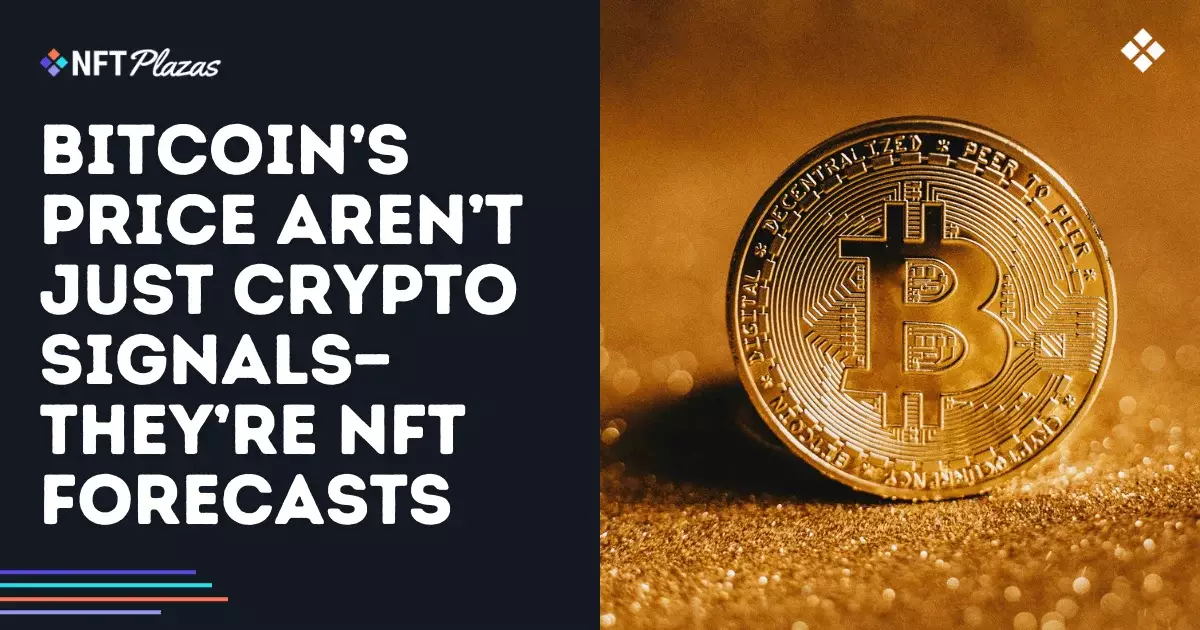In the ever-evolving world of crypto, Bitcoin stands as the undeniable titan of the financial landscape. Its influence extends far beyond mere price fluctuations; it serves as a bellwether for the NFT market’s health and direction. The intricate connection is not just significant; it is alarmingly predictive. This correlation has become a tool for savvy traders and collectors seeking transparency in the often murky waters of non-fungible token speculation. The reality is clear: when Bitcoin fluctuates—whether through peaks or through valleys—the NFT market follows suit with stark adherence, often amplifying the effects to bewildering degrees.
Bitcoin’s Bull Run: Catalyst for NFT Mainstreaming
Reflecting on 2021, it’s hard to ignore how Bitcoin’s soaring values catalyzed an explosive growth phase for NFTs. The cryptocurrency broke the psychological barrier of $40,000, ushering in a wave of interest that felt like a digital renaissance for art and collectibles. The sale of Beeple’s groundbreaking piece for $69 million was perhaps the defining moment, changing the perception of digital art forever. Yet this was no isolated phenomenon; it was a reflection of Bitcoin’s massive market engagement, suggesting that the time for NFTs had truly arrived. However, this thrilling ascent was not merely a sign of artistry’s resurgence but a market’s speculative bubble inflated by hope and optimism.
The Inevitable Downturn: NFT Market’s Dramatic Collapse
As is often the case with speculative markets, the dramatic ascent was followed by an equally dramatic descent. Bitcoin’s plunge below $20,000 in mid-2022 wasn’t just a grim statistic; it triggered a tsunami that washed over the NFT sector and obliterated sales volume, revealing the fragility of investor confidence. June 2022 witnessed a staggering 75% drop in NFT sales compared to January of the same year, underlining just how closely intertwined these markets are. The pain was palpable, and many NFT projects that had been basking in the glow of Bitcoin-led exuberance fell into obscurity, reeling from the harsh reality of evaporating capital.
The Emotional Roller Coaster: Fear, Greed, and Sentiment Analysis
Understanding the ebb and flow of market sentiment is essential in navigating the highly volatile waters of NFTs. The Fear and Greed Index acts like a weather vane, suggesting when it’s time to be cautious or when sentiment might shift towards optimism. Bitcoin’s price chart often serves as an early indicator for those engaged in NFT trading. When fear grips the crypto markets, it is typically the NFTs that bear the brunt of heightened emotional responses. This paints a picture of a lemming-like dynamic among traders, where market sentiments manifest first in Bitcoin before rippling outward to NFTs.
Strategizing in the Crypto Crossfire
The prudent investor has started to align their strategies with the macro cycles of cryptocurrencies, particularly Bitcoin. A deeper understanding of how Bitcoin’s oscillations influence NFT floor prices, project visibility, and mint success is critical for anyone looking to thrive in this turbulent terrain. This is not simply speculative trading; it requires a comprehensive grasp of the overarching market dynamics. If you’re operating in this sphere, keeping an eye on Bitcoin is paramount—it is the harbinger of both opportunity and risk in the realm of NFTs. As the landscape continues to shift, those who understand the correlations will not only survive but can potentially prosper amid the chaos.













